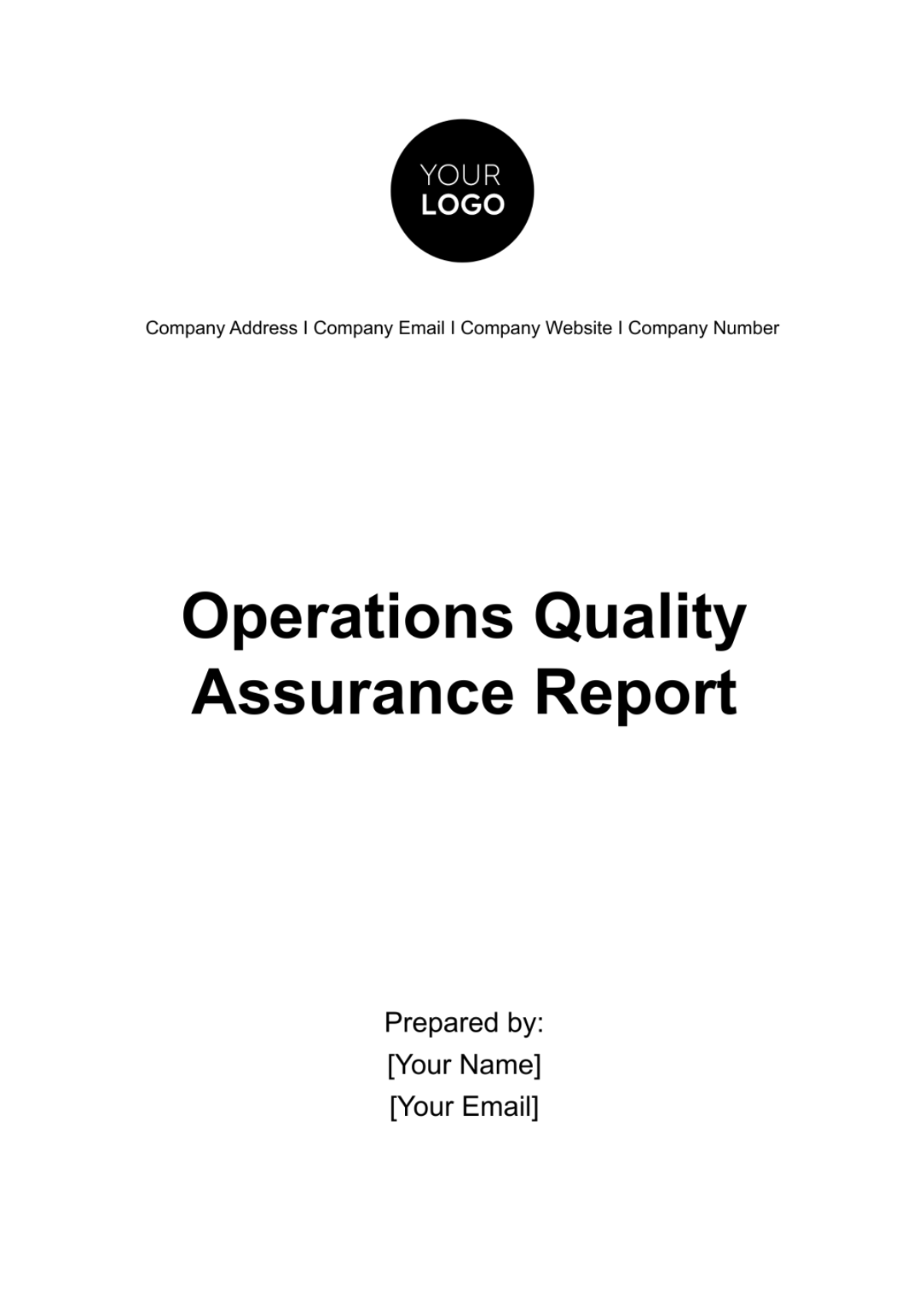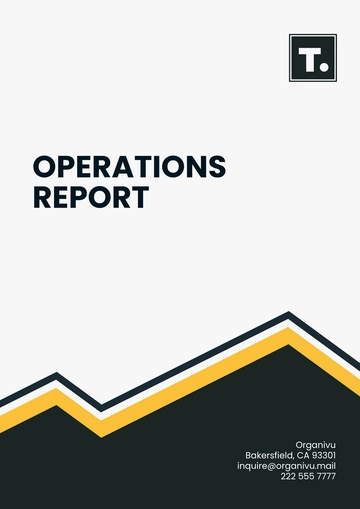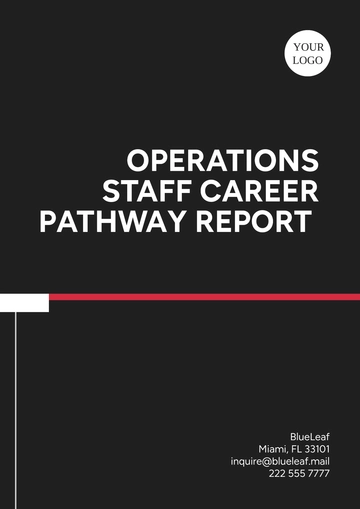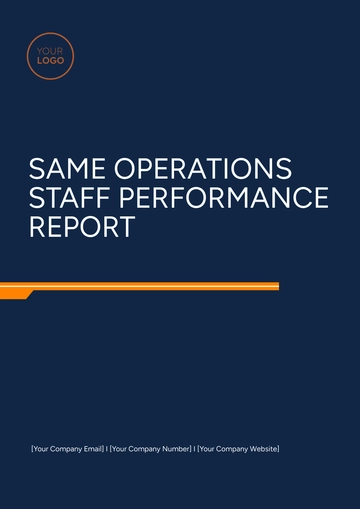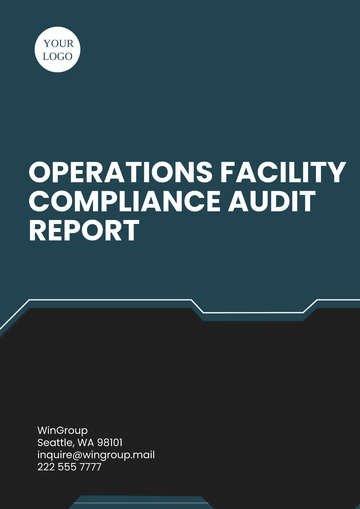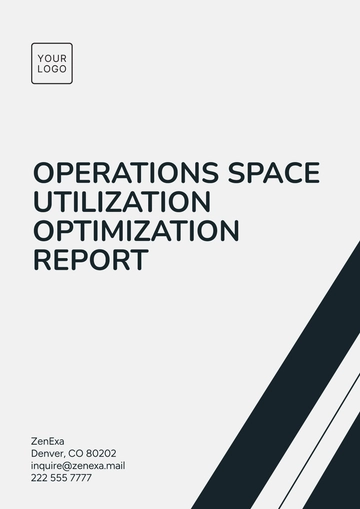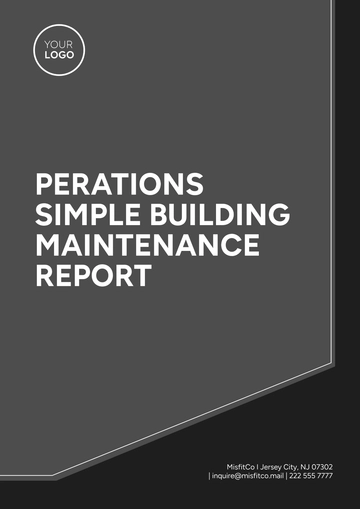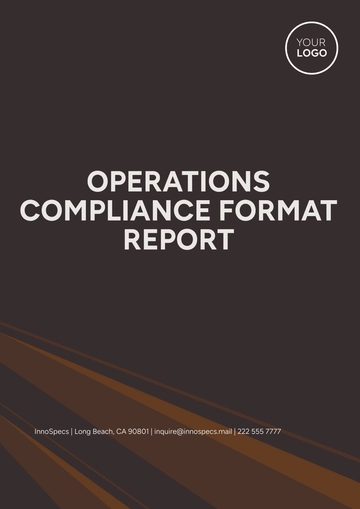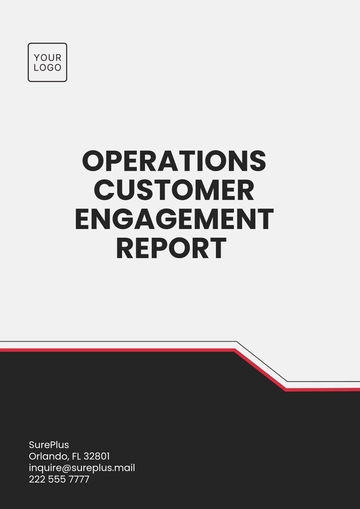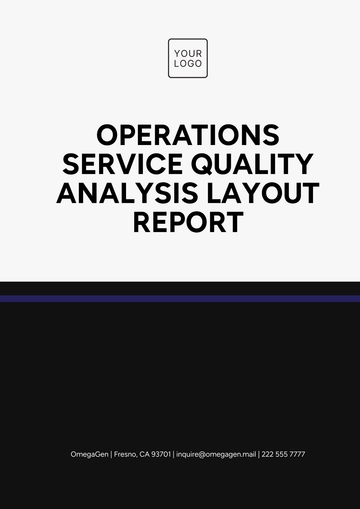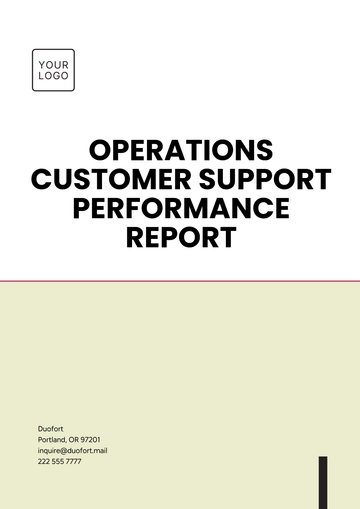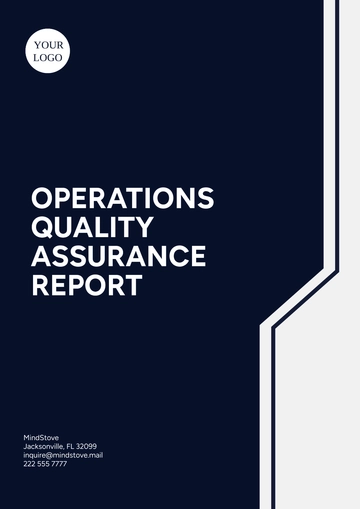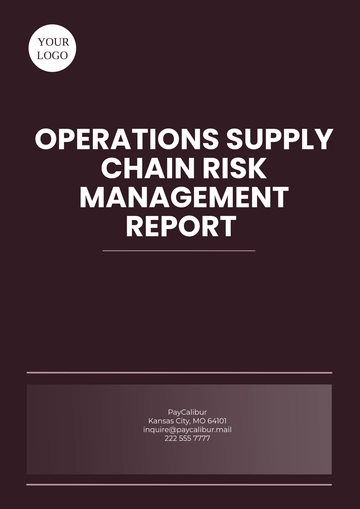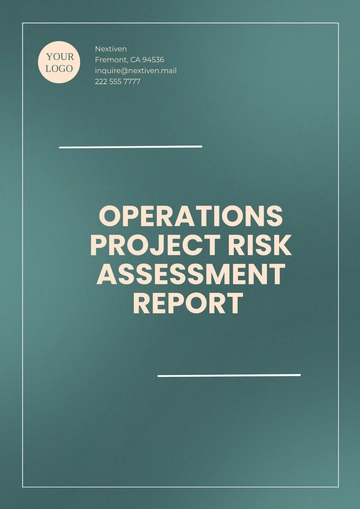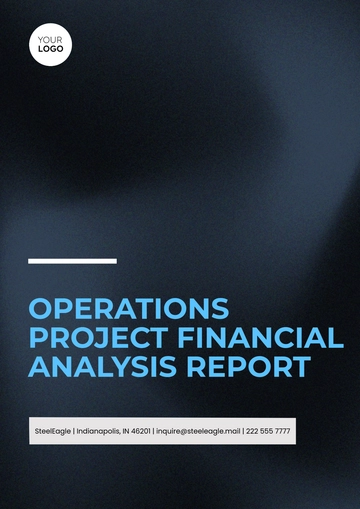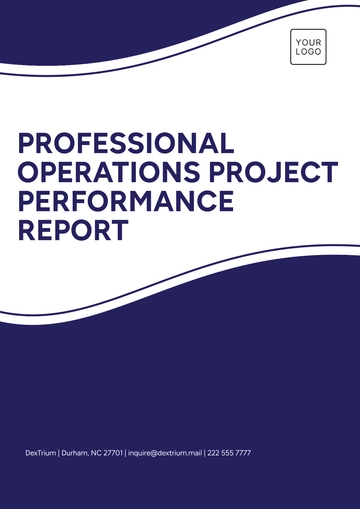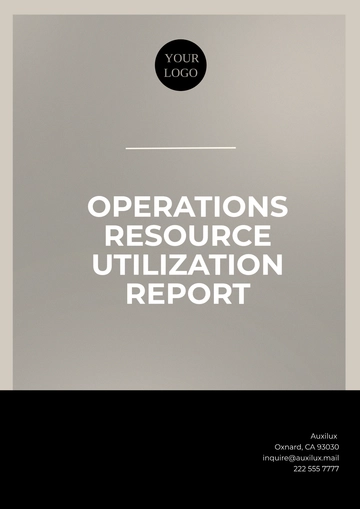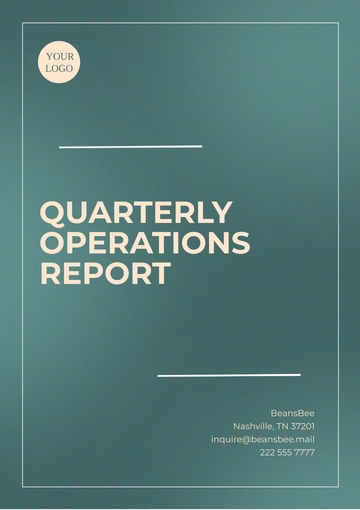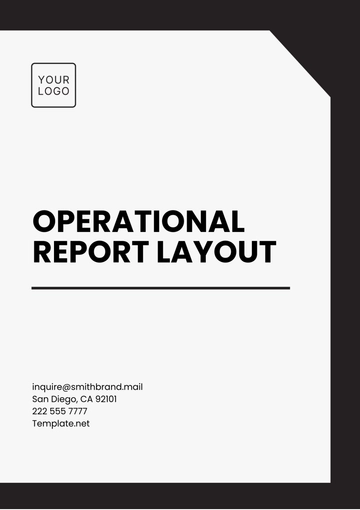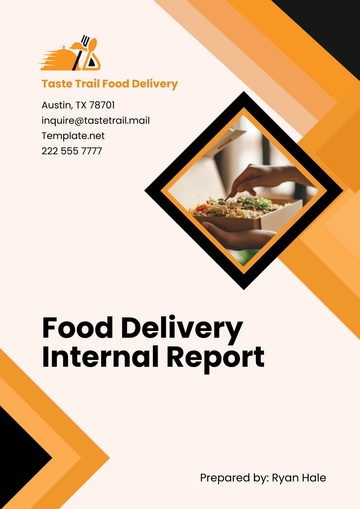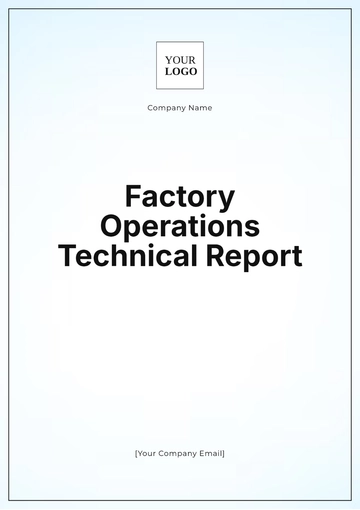Operations Quality Assurance Report
[Your Company Name]
[Your Company Address]
1. Executive Summary
This report highlights our commitment to excellence, achieving a 12% reduction in defects and an 8% increase in customer satisfaction despite challenges like supply chain disruptions. Strategic initiatives in quality management and process optimization have strengthened our foundation for continuous improvement.
2. Introduction
The essence of this report is to scrutinize the efficacy of our quality assurance (QA) practices across the organization's operations within the last year. It aims to provide a transparent, data-driven account of our efforts to uphold and enhance the quality of our products and services, aligning with our core mission to exceed customer expectations and adhere to the highest industry standards. By systematically evaluating our QA activities, this report illuminates our achievements, challenges, and areas necessitating further enhancement, setting the stage for informed decision-making and strategic planning.
3. Objectives
Our quality assurance objectives for the period were ambitiously set to underscore our commitment to continuous improvement and customer satisfaction. These objectives included:
Reduce Product Defect Rates: Targeting a reduction in product defect rates by 10%, emphasizing the enhancement of product reliability and customer trust.
Achieve Compliance Excellence: Strive for a 100% compliance rate with all applicable quality standards and regulatory requirements, demonstrating our commitment to operational excellence and legal adherence.
Enhance Customer Satisfaction: Increase customer satisfaction levels by 5% through improved product quality and customer service, thereby strengthening our market position and customer loyalty.
4. Methodology
The methodology employed to evaluate our quality assurance activities encompassed a comprehensive, multi-faceted approach:
Data Collection: We systematically gathered data from various sources, including production records, quality control logs, customer feedback surveys, and compliance audit reports, ensuring a broad and accurate representation of our QA performance.
Quantitative Analysis: Utilizing statistical analysis tools, we meticulously analyzed performance metrics, defect rates, and compliance indicators, comparing them against our set objectives to quantitatively assess our achievements and identify areas for improvement.
5. Findings and Analysis
Our comprehensive analysis of quality assurance activities over the past year has provided valuable insights into our operational performance, quality control measures, supplier quality assurance, and customer satisfaction levels.
A. Operational Performance
Metric | Target | Achieved | Variance |
Defect Rate (%) | ≤ 8% | 7.5% | -0.5% |
Production Efficiency (%) | ≥ 90% | 92% | +2% |
Compliance Rate (%) | 100% | 96% | -4% |
Our processes improved with a defect rate drop to 7.5%, better than our ≤ 8% target, thanks to better controls and inspections. Production efficiency beat expectations by 2%, showcasing our team's operational skills. However, we missed our 100% compliance goal, highlighting the need for stricter regulatory adherence and quality management.
B. Quality Control Activities
Activity | Target | Achieved | Variance |
Inspection Pass Rate (%) | ≥ 95% | 94% | -1% |
Testing Coverage (%) | 100% | 100% | 0% |
Monitoring Compliance (%) | 100% | 98% | -2% |
Quality control ensures high product standards with 100% testing, but a slightly missed inspection pass rate and compliance deviation suggest minor improvements needed in defect detection and monitoring.
C. Supplier Quality Assurance
Metric | Target | Achieved | Variance |
Supplier Compliance Rate (%) | ≥ 95% | 93% | -2% |
Material Rejection Rate (%) | < 5% | 4.8% | -0.2% |
On-time Delivery Rate (%) | ≥ 98% | 97% | -1% |
Supplier quality assurance is vital to our QA strategy. Supplier compliance and on-time delivery rates fell short, highlighting the need for better collaboration and stricter criteria. However, the material rejection rate met expectations, showing effective incoming material inspections.
D. Customer Feedback and Satisfaction
Metric | Target | Achieved | Variance |
Customer Satisfaction Score | ≥ 90 | 92 | +2 |
Negative Feedback Rate (%) | < 10% | 8% | -2% |
Repeat Purchase Rate (%) | ≥ 70% | 72% | +2% |
Customer feedback shows a positive trend as our satisfaction score surpasses the target, reflecting our commitment to exceeding expectations. A decrease in negative feedback and increased repeat purchases indicate success in improving quality and service. Ongoing feedback analysis will be key to maintaining these gains.
6. Areas for Improvement
Despite our achievements in quality assurance over the past year, our analysis has identified several areas where improvements are necessary to further enhance our operational quality and efficiency. Addressing these areas will be critical to sustaining our competitive advantage and ensuring continued customer satisfaction.
1. Enhanced Compliance with Regulatory Standards
We missed our 100% compliance target; to improve, we need better monitoring and staff training on regulations, which will reduce non-conformity risks and strengthen trust with customers and regulators.
2. Supplier Performance Management
Supplier compliance and delivery gaps highlight the necessity for a stronger performance management system. We need stricter criteria, regular reviews, frequent audits, and performance incentives to improve supplier quality and delivery, reducing rejections and delays.
3. Process Optimization for Defect Reduction
Although we've lowered our defect rate, ongoing improvement is crucial. Investing in advanced SPC tools can help identify and eliminate defects' root causes more effectively, optimizing processes to reduce waste, boost efficiency, and enhance product quality, resulting in greater customer satisfaction and loyalty.
7. Best Practices
Our quality assurance activities have also highlighted several best practices that significantly contributed to our successes. These best practices serve as a foundation for our ongoing commitment to quality and operational excellence.
1. Rigorous Quality Control Measures
Rigorous quality control measures, including thorough inspections and testing, have helped us maintain high product standards by detecting and addressing defects early, reducing our defect rate, and ensuring only top-quality products reach customers.
2. Customer Feedback Loop
Our proactive feedback system has boosted customer satisfaction scores by quickly addressing concerns, improving products and services, and strengthening relationships.
3. Continuous Employee Training and Engagement
Investing in ongoing employee training has boosted our quality assurance by fostering a culture of continuous improvement, which enhances efficiency, compliance, and employee contributions.
8. Recommendations
Based on our findings and analysis of the quality assurance activities over the past year, we propose the following recommendations to address identified areas for improvement and to reinforce our best practices. Implementing these recommendations will be instrumental in enhancing our operational quality, efficiency, and customer satisfaction.
1. Implement Advanced Compliance Monitoring Systems
We recommend implementing advanced real-time monitoring systems to enhance regulatory compliance, enabling immediate corrective actions and ensuring continuous adherence to standards, thereby reducing non-compliance risks.
2. Strengthen Supplier Performance Management
Enhancing supplier performance is vital for input quality and timely production. We recommend a structured management framework with regular evaluations, feedback, improvement plans, and performance-based incentives and penalties to motivate higher quality and reliability.
3. Invest in Process Optimization Technologies
Invest in process optimization technologies, like advanced SPC software, to reduce defect rates, enhance product quality, and boost operational efficiency by enabling precise adjustments and continuous improvements.
4. Expand Continuous Training Programs
We should expand continuous training for employees in quality standards, compliance, and process optimization to ensure expertise and promote a culture of quality and improvement.
9. Conclusion
This report reviews our quality assurance efforts over the past year, highlighting achievements and improvement areas. Despite challenges, we improved product quality, efficiency, and customer satisfaction. The recommendations aim to address gaps and enhance practices for continuous improvement, reinforcing our commitment to excellence and customer expectations. We remain dedicated to investing in necessary changes to achieve our quality goals and maintain a competitive edge.
Report Templates @ Template.net
